




OUR BEST EVER OFFER - SAVE £100/$100
JOIN THE WORLD'S LEADING PROFESSIONAL DEVELOPMENT PROGRAMME
- 12 months membership of Elite Soccer
- Print copy of Elite Player & Coach Development
- Print copy of The Training Ground
Long-range shooting
Goalscoring, more than anything else, builds confidence in players. And with a game-realistic session such as this, players are building good habits into their match day practice.
| Area | 36x18 yards |
| Equipment | Balls, bibs, goals |
| No. of Players | 14 (6 per side and 2 keepers) |
| Session Time | Session 50mins, Progression 30mins, Game 20mins |
This session is about shooting from distance and the process of moving the ball into position for a shot.
Goalscoring, more than anything else, builds confidence in players. And with a game-realistic session such as this, players are building good habits into their match day practice.
What do I get the players to do?
The long-range shooting session starts by dividing a 36x18-yard pitch into two halves. Goals can only be scored from the defending half. We set up four attackers in the defending half, and another two in the attacking half. The role of the two players furthest forward is to set the ball back for any one of their four team mates to shoot at goal. It’s a high-intensity practice, so players rotate every three minutes. (1a)
1a
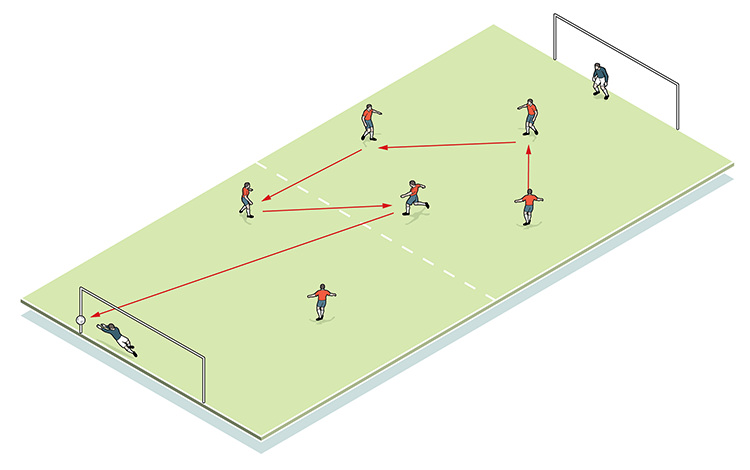
Progressing to an opposed practise, opponents now attack the opposite goal - thus each side has a 4v2 overload in their defensive half. (1b) While the set-up men cannot be challenged when the ball comes to them, they now also have to act as defenders, closing down play and attempting to win possession. In addition, they can follow in any rebounds from blocked shots (1c). Whether a shot ends in a goal or otherwise, a new attack must come back in the other direction.
1b
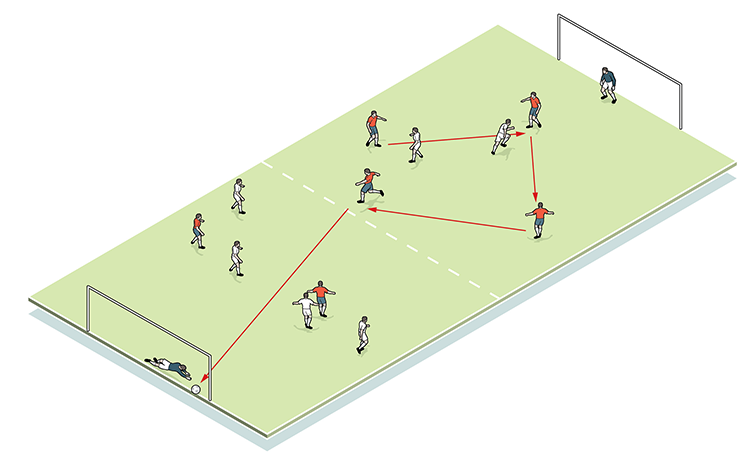
1c

How do I progress the session?
We progress by encouraging each group of four to act as all-out defenders when their team is not in possession. They can block long-range shots and tackle back to deny the two attackers rebound opportunities.
We might also add touch or time restrictions, as well as asking players to shoot with their other foot.
And to ensure a high intensity is maintained throughout, defenders can catch any balls going wide. This ensures that play comes back the other way immediately, and if a catch is made, the attacking team loses a goal. (2)
2
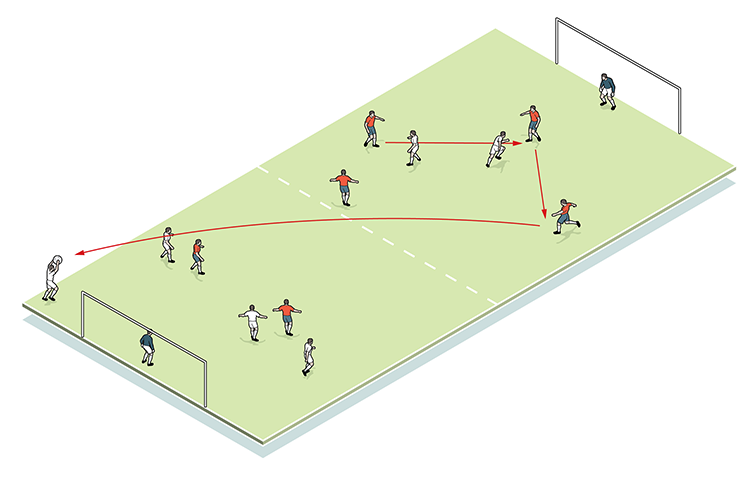
What are the key things to look for technically/tactically?
We’re looking for a good first touch from the set-up players to ensure a team mate the best chance of getting a clean shot away. Players should move quickly and get the ball into space, and when shooting, (3a) should be aiming for the corners of the goal. The two rebound players must remain alert at all times, while other tactics such as shooting when the keeper is unsighted, (3b) and disguising shots, are encouraged in order to create space and clearer routes to goal.
3a
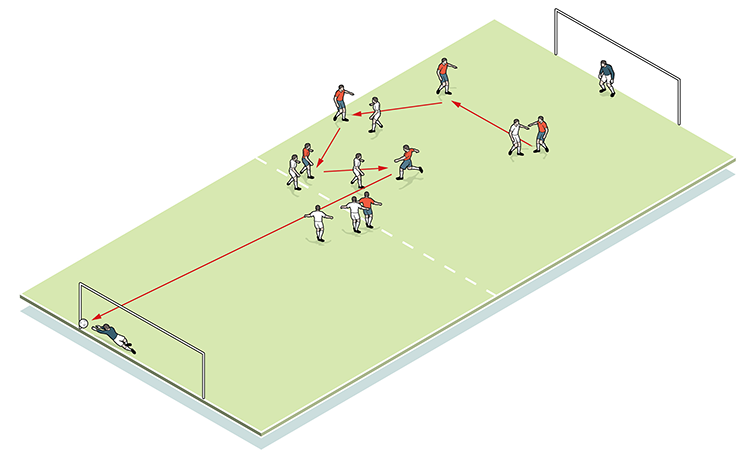
3b
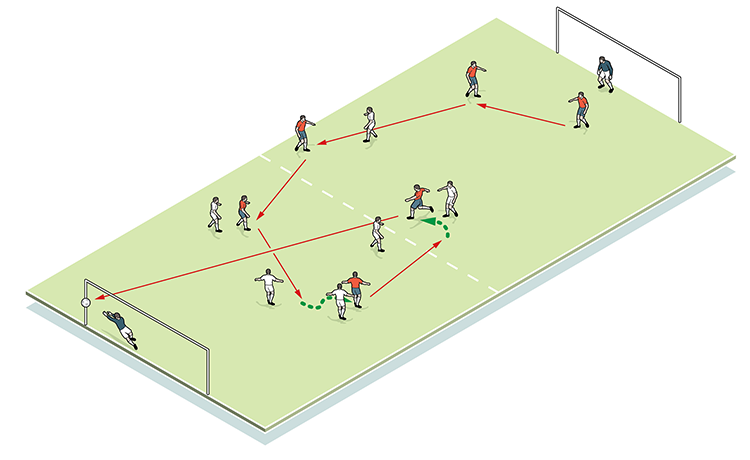
Related Files
Editor's Picks
Attacking transitions
Deep runs in the final third
Using the goalkeeper in build-up play
Intensive boxes drill with goals
Penetrating the final third
Creating and finishing
My philosophy
Pressing initiation
Compact team movement
Coaches' Testimonials

Alan Pardew

Arsène Wenger

Brendan Rodgers

Carlos Carvalhal

José Mourinho

Jürgen Klopp

Pep Guardiola

Roy Hodgson

Sir Alex Ferguson

Steven Gerrard
Related
Coaches' Testimonials

Gerald Kearney, Downtown Las Vegas Soccer Club

Paul Butler, Florida, USA

Rick Shields, Springboro, USA

Tony Green, Pierrefonds Titans, Quebec, Canada
Join the world's leading coaches and managers and discover for yourself one of the best kept secrets in coaching. No other training tool on the planet is written or read by the calibre of names you’ll find in Elite Soccer.
In a recent survey 92% of subscribers said Elite Soccer makes them more confident, 89% said it makes them a more effective coach and 91% said it makes them more inspired.
Get Monthly Inspiration
All the latest techniques and approaches
Since 2010 Elite Soccer has given subscribers exclusive insight into the training ground practices of the world’s best coaches. Published in partnership with the League Managers Association we have unparalleled access to the leading lights in the English leagues, as well as a host of international managers.
Elite Soccer exclusively features sessions written by the coaches themselves. There are no observed sessions and no sessions “in the style of”, just first-hand advice delivered direct to you from the coach.







